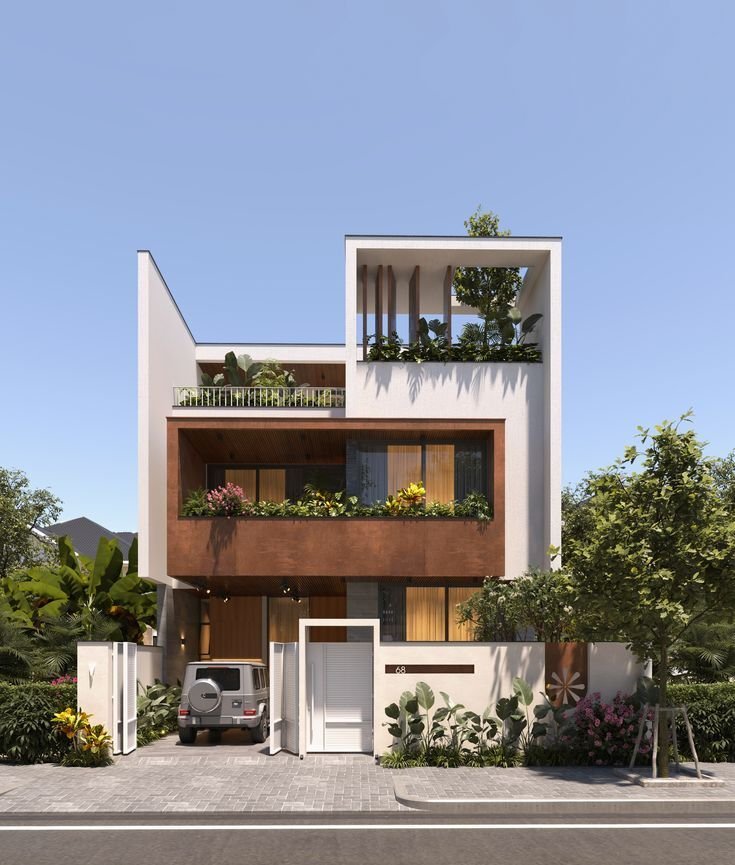As technology continues to advance at an unprecedented pace, its integration into our daily lives is becoming more seamless and sophisticated. One of the most exciting developments in this sphere is the rise of smart homes, where cutting-edge technology merges with modern architecture to create living spaces that are not only comfortable but also intelligent and efficient. Smart homes represent the future of residential living, blending convenience, security, energy efficiency, and sustainability.
What Are Smart Homes?
Smart homes are residential spaces equipped with a network of interconnected devices and systems that can be controlled remotely via smartphones, tablets, or voice commands. These homes use Internet of Things (IoT) technology to automate tasks, monitor energy usage, enhance security, and provide convenience to homeowners. From lighting and heating to security systems and kitchen appliances, nearly every aspect of a smart home can be managed with ease through centralized controls.
Key Features of Smart Homes
Home Automation One of the primary features of smart homes is automation. Lighting, thermostats, blinds, and even entertainment systems can be programmed to operate autonomously based on time, motion detection, or occupancy. Automation not only enhances convenience but also contributes to energy efficiency by ensuring that systems are only active when needed.
Smart Security Systems Advanced security is a hallmark of smart homes. From smart locks that can be controlled remotely to video doorbells and surveillance cameras with real-time monitoring, these systems provide homeowners with enhanced peace of mind. Alerts and notifications can be sent directly to a homeowner’s phone, ensuring that any potential security issues are addressed immediately.
Energy Efficiency Smart homes are designed with energy efficiency in mind. Smart thermostats like Nest or Ecobee learn homeowners’ preferences and adjust temperatures accordingly, reducing unnecessary energy consumption. Smart lighting systems can automatically turn off when no one is in the room, and appliances can be scheduled to run during off-peak energy hours.
Voice-Activated Assistants Voice-activated virtual assistants like Amazon’s Alexa, Google Assistant, and Apple’s Siri play a central role in smart home management. These assistants allow users to control devices, access information, and even manage their schedules using simple voice commands, creating a hands-free, user-friendly experience.
Connected Appliances From refrigerators that can suggest recipes based on available ingredients to ovens that can be preheated remotely, smart appliances are transforming kitchens into highly efficient spaces. These appliances not only provide convenience but also contribute to a more sustainable and organized household.
Smart Lighting and Climate Control Lighting and climate control systems in smart homes are highly customizable. Homeowners can control lighting intensity, color, and even set schedules that mimic natural light patterns. Smart climate control systems help maintain optimal comfort while minimizing energy use by adjusting temperatures based on real-time weather conditions or occupancy patterns.

The Impact of Smart Homes on Architecture
The integration of smart technology into homes has revolutionized architectural design. Architects and designers are increasingly adopting strategies to incorporate technology seamlessly into the structure of homes without compromising aesthetics. Here are a few ways in which smart home technology is influencing modern architecture:
Design for Connectivity Smart homes rely on a robust network infrastructure to connect various devices. Architects are designing homes with integrated wiring and wireless networks, ensuring that every room is equipped to support high-speed internet and data transfer. The placement of routers, hubs, and charging stations is carefully planned to ensure seamless connectivity throughout the home.
Energy-Efficient Architecture Smart homes are often paired with energy-efficient architectural designs. Homes are being constructed with advanced insulation, eco-friendly materials, and energy-efficient windows, while smart systems monitor and control energy usage. Solar panels and smart grids are also being incorporated to reduce reliance on traditional energy sources, making homes more sustainable.
Flexible Spaces As homes become smarter, architects are creating flexible, multi-functional spaces that can adapt to the evolving needs of homeowners. For instance, living rooms can transform into home offices or entertainment hubs with the touch of a button. Automated furniture and movable walls are also becoming more common in smart homes, allowing for dynamic living environments.
Seamless Integration of Technology Instead of adding gadgets and devices as an afterthought, architects are designing homes with technology in mind from the outset. This includes incorporating built-in speakers, hidden screens, and discreet charging stations into the overall design. The result is a seamless blending of technology and architecture that enhances the aesthetic appeal and functionality of the home.
Sustainable Design As sustainability becomes a priority in modern architecture, smart homes are playing a crucial role in reducing environmental impact. Architects are using smart systems to monitor energy consumption, water usage, and waste management. Homes are being designed with rainwater harvesting systems, solar panels, and energy-efficient appliances that work in harmony with smart technologies to create eco-friendly living spaces.
Benefits of Smart Homes
Convenience and Comfort Smart homes offer unparalleled convenience, allowing homeowners to control everything from lighting to security with the touch of a button or a voice command. Customizable settings ensure that homes are comfortable and tailored to the preferences of each resident.
Enhanced Security With advanced smart security systems, homeowners can monitor and protect their homes from anywhere in the world. Smart locks, cameras, and sensors provide an added layer of protection, with real-time alerts and remote control features ensuring that security is always at hand.
Energy Savings Smart homes are designed to be energy-efficient, with systems that optimize energy usage based on occupancy, time of day, and real-time conditions. By reducing waste and automating processes, smart homes can significantly lower energy bills and contribute to a greener planet.
Future-Proofing As technology continues to evolve, smart homes are inherently designed to adapt and integrate new devices and systems. This future-proofing ensures that smart homes remain relevant and functional as new innovations emerge.
Challenges and Considerations
While smart homes offer a host of benefits, there are some challenges to consider. Privacy and security concerns remain a top priority, as connected devices may be vulnerable to hacking or data breaches. Ensuring a strong, secure network and protecting personal data are essential in maintaining the safety of smart homes. Additionally, the initial cost of implementing smart home technologies can be high, although long-term savings often offset these expenses.
Conclusion
The rise of smart homes marks a significant shift in the way we design, build, and live in our homes. As technology continues to advance, the integration of smart systems into residential architecture will only become more prevalent, creating homes that are not only more convenient and efficient but also more sustainable and secure. Smart homes represent the future of living, where technology and architecture merge to create spaces that enhance our quality of life while addressing the environmental and social challenges of the modern world.


